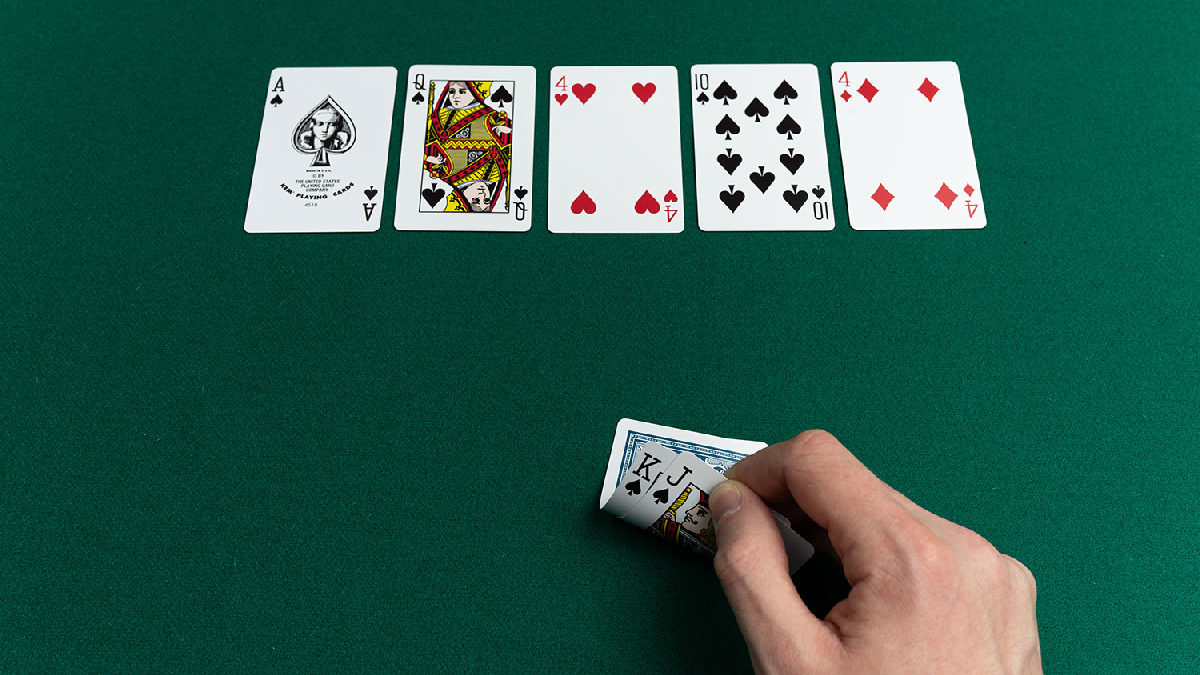Number Of Possible Hands In Texas Holdem
- Possible Hands In Texas Holdem Poker
- Possible Hands In Texas Holdem
- Number Of Possible Hands In Texas Hold'em
- Number Of Starting Hands In Texas Holdem
For a certain segment of new hold’em players, starting hand charts can be fascinating. Even those with many years of experience who have little need to consult such charts still find them interesting as debate-starters.
In hold’em there are 169 different combinations of hands you can be dealt. For those of us who enjoy working with numbers or creating lists with which to organize our lives, there’s something appealing about the idea of ranking all of those hands from 1 to 169, even if we know such a list probably might have only limited value when it comes to actual game play.
Online, free poker hand range calculator for everyone. The odds are instantly calculated and displayed as a card is added to the table or the dead card grid. Great tool for improving Texas Hold’em strategy. There are 169 possible starting hands in NLHE. These are represented by the 13×13 matrix: If you select every hand in the matrix, there are 1,326 preflop combos. Once you factor in both of your hole cards, the maximum number of remaining preflop combos drops to 1,225. Charts ranking the 169 different starting hands in Texas hold'em can be very intriguing, but it's important to remember they are of limited value. Live Events 1 2020 WSOP Main Event.
In truth, there are actually a lot more possible combinations of hole cards in hold’em — 1,326 of them, in fact. But that total also considers suits as distinct, when in fact before the community cards come the suits are all essentially of equal value.
Possible Hands In Texas Holdem Poker

Possible Hands In Texas Holdem
That is to say, is of the same value as when playing preflop, while and are also of equivalent value. So, too, are the different combinations producing the same pocket pairs all equal before the flop in terms of their relative worth. While there are six different ways to get pocket aces — , , , , , — you're equally happy no matter what suits the cards are.
So we get rid of all of those redundant hands and say that in Texas hold'em there are 169 “non-equivalent” starting hands, breaking them down as follows:

- 13 pocket pairs
- 78 non-paired suited hands (e.g., with two cards of the same suit like or )
- 78 non-paired unsuited hands (e.g., with two cards of different suits like or )
Notice now the non-paired combinations of hole cards neatly divide into equal groups, both of which are six times as large (78) as the smaller group of pocket pairs (13). The total of 169 combinations represents a square, too — 13 x 13 — another curious symmetry when it comes to hold'em hands.
Still, that’s a lot of starting hand combinations — too many for most of us humans to keep in our heads — which is one reason hand ranking charts are appealing and even can be useful, since they help players think about certain two-card combos as “strong” or “average” or “weak” as possible starters.
Setting aside the idea of actually ranking the 169 hands from best to worst, we might think for a moment about other ways of categorizing starting hands in hold’em, using that initial breakdown of hands into pocket pairs, non-paired suited hands, and non-paired unsuited hand as a first step toward coming up with further, smaller groups that are easier to remember.
The 13 pocket pairs we might group as big or “premium” (, , and ), medium ( through ), and small ( through ).
Meanwhile, we might divide each of the other groups into “connectors,” “one-gappers,” and “two-gappers” (and so on), further thinking of them also as “big,” “medium,” and “small” while also keeping separate suited and non-suited combinations.
These categories of non-paired hands are created by thinking about straight-making possibilities (affected by connectedness) and flush-making possibilties (affected by suitedness). There are more ways to make straights with “connectors” — that is, two cards of consecutive rank like — than with two-gappers, three-gappers, and so on. So, too, do you have a better chance of making a flush with suited hole cards than with non-suited hole cards.
Another possible group to create would include “ace hands” — i.e., non-paired hands containing one ace — that can be thought of as “big aces” (e.g., , ), “medium aces” ( down to ), and “small aces” ( to ). Or “king hands,” too. We like keeping these groups in mind, as hands with big cards like an ace or king can connect with flops to make big pairs.
In any case, you can see how these criteria for making categories can help when it comes to building those starting hand charts. And in fact most of those charts feature a similar ordering of hands, with...
- the premium pocket pairs and the big aces (suited and non-suited) up at the top;
- medium and small pocket pairs and big-to-medium suited connectors and one-gappers in the middle;
- and non-paired hands with less potential to make big pairs, straights, or flushes toward the bottom.
 Free Giveaway: Win a WSOP Main Event Seat!
Free Giveaway: Win a WSOP Main Event Seat!Number Of Possible Hands In Texas Hold'em
Would you like to get your hands on a free $10k entry to the WSOP Main Event?
Click on the link below and enter your email to participate to the free giveaway and take a shot at this massive opportunity!
Play NowHowever, there are problems with relying so heavily on starting hand charts that you don’t take into account factors that can make a given hand gain or lose value. Such as the flop. Or the turn. Or the river. Or other factors — including how your opponents are playing their hands — that can quickly affect the value of your starting hands.
After all, as anyone who’s played even a few hands of hold’em well knows, even if is the highest-ranking starting hand and a non-suited ranks as 169th, a couple of deuces among the community cards is all it takes to make the best hand worst and the worst hand best.
Learning the relative value of starting hands is definitely an important first step when it comes to getting started in hold’em. Other aspects of game play such as the importance of position, knowing when and how much to bet or raise, and thinking about opponents’ holdings and playing styles as hands proceed are good to learn, too, and help show how a great starting hand might not be so great five community cards later.
Poker is not blackjack, a game in which similar hand-ranking guides are sometimes used to inform players’ decisions about how to play. In poker you want to be wary about becoming too reliant on those pretty starting hand charts. They can be great for indicating which hands might be worth playing (and which should be thrown away), but troublesome if allowed to outweigh all of the other important factors that arise as a hand plays out.
That said, starting hand charts can be useful, especially for those new to hold’em. They also can be a big help when picking up other games, too, like pot-limit Omaha or the various stud games, if only to get an early idea what hands tend to play better than others.
But for many such charts ultimately are only themselves a way to get started, before the experience of playing helps players more instinctively recognize both hand groupings and how hands tend to compare in terms of profitability.
Get all the latest PokerNews updates on your social media outlets. Follow us on Twitter and find us on both Facebook and Google+!
Tags
no-limit hold’emcash game strategytournament strategybeginner strategystarting hand selectionstarting hand chartsmath
Online, free poker hand range calculator for everyone. The odds are instantly calculated and displayed as a card is added to the table or the dead card grid. Great tool for improving Texas Hold’em strategy.
Useful information regarding Poker Hand Range Calculator
What is range in Poker?
A range is a combination of hands a player might have at a given time. Thinking about what players have in the form of a range is valuable because it allows you to think about all of the possibilities of a hand. Experts say that once you understand the idea behind poker range you will soon forget the way of thinking earlier. Thanks to our calculator developed by Forest Turner now you can easily learn flop textures and how ranges split up on boards, how equities shift on turn and river cards.
What you can see with our Poker Hand Range calculator?

The Poker Hand Range Calculator instantly show equities, combination counts, and hand value breakdowns. Use the reset buttons to start over the calculation. First, we start with a preflop range. Get started by selecting a preflop range for the scenario you are analyzing.
What is the highest hand and hands order in poker?
You can see the hands order below starting with the highest ending with the lowest:
• RoyalFlush: 10, Jack, Queen, King, Ace all in the same suit.
• StraightFlush: Five cards in a row, all in the same suit.
• Four of aKind: The same card in each of the four suits.
• FullHouse: A pair plus three of a kind in the same hand.
Number Of Starting Hands In Texas Holdem
• Flush:Five cards, all in one suit but no numerical order (4, 9, 10, King, Ace in onesuit).
• Straight:Five cards in numerical order, but no same suit (4, 5, 6, 7, 8 with differentsuit).
• Three ofa Kind: Three of one card (3 Queens).
• Two Pair:Two different pairings of the same card in one hand (two Aces and two Jacks forexample).
• One Pair: Two cards of the same card (twoAces for example).
• High Card: If you have nothing the highest card plays.